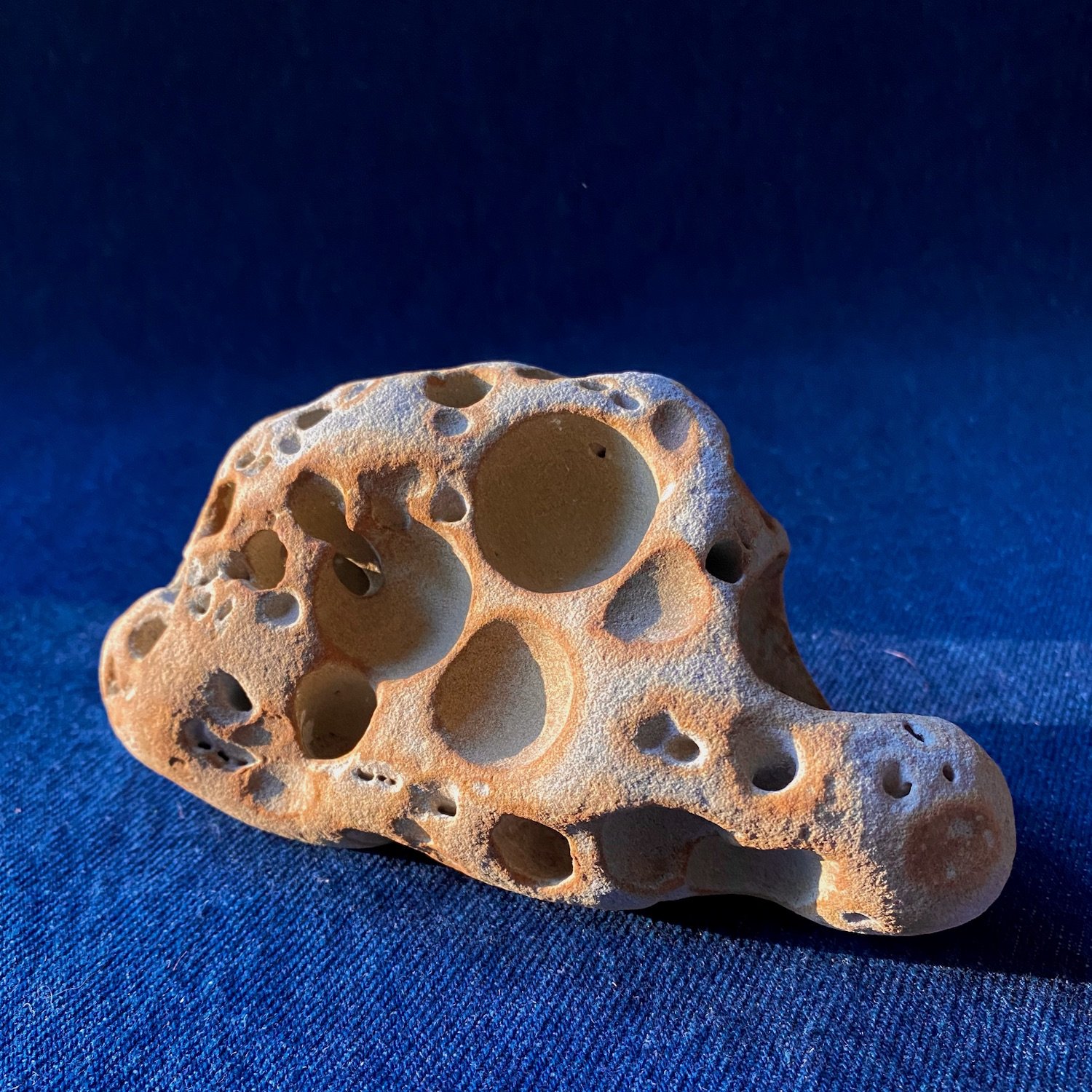 Image 1 of 2
Image 1 of 2

 Image 2 of 2
Image 2 of 2



Piddock Rock Suiseki
These stones, tossed up on West Coast beaches by winter storms, have been sculpted by an unusual clam called a piddock, or “angel-wing.” This remarkable creature has rasp-like ridges on its shell, which it uses to slowly carve into clay or even rock. The clam stays in the burrow for its entire eight-year lifespan, with only its siphon exposed. When it dies, other small sea creatures may occupy its former home. As piddock-bored stones are eroded by the waves, they may form pierced “hag stones,” which have many magical connotations. This example sits upright, like a small “windowsill” suiseki.
6” x 3”
These stones, tossed up on West Coast beaches by winter storms, have been sculpted by an unusual clam called a piddock, or “angel-wing.” This remarkable creature has rasp-like ridges on its shell, which it uses to slowly carve into clay or even rock. The clam stays in the burrow for its entire eight-year lifespan, with only its siphon exposed. When it dies, other small sea creatures may occupy its former home. As piddock-bored stones are eroded by the waves, they may form pierced “hag stones,” which have many magical connotations. This example sits upright, like a small “windowsill” suiseki.
6” x 3”
These stones, tossed up on West Coast beaches by winter storms, have been sculpted by an unusual clam called a piddock, or “angel-wing.” This remarkable creature has rasp-like ridges on its shell, which it uses to slowly carve into clay or even rock. The clam stays in the burrow for its entire eight-year lifespan, with only its siphon exposed. When it dies, other small sea creatures may occupy its former home. As piddock-bored stones are eroded by the waves, they may form pierced “hag stones,” which have many magical connotations. This example sits upright, like a small “windowsill” suiseki.
6” x 3”